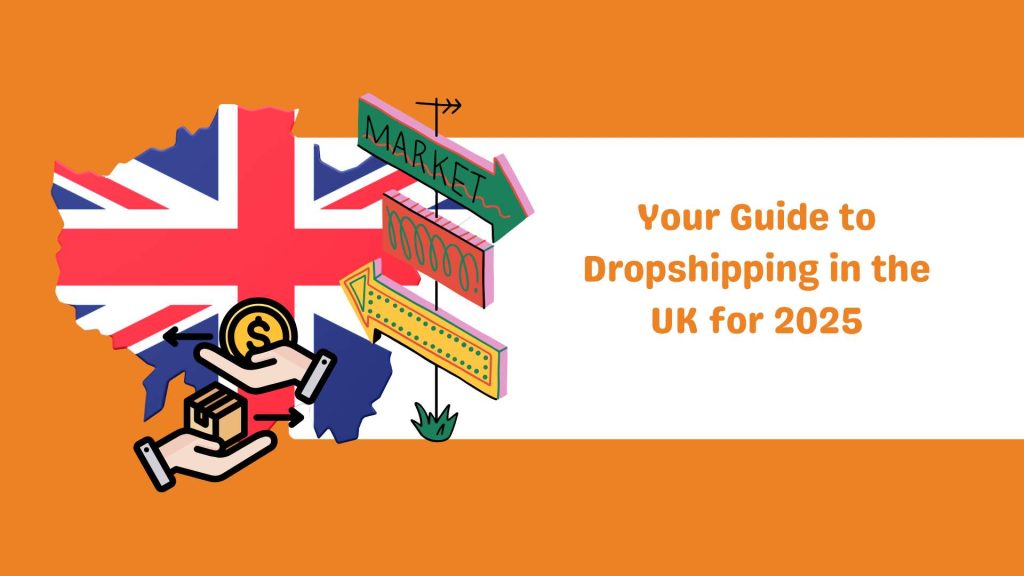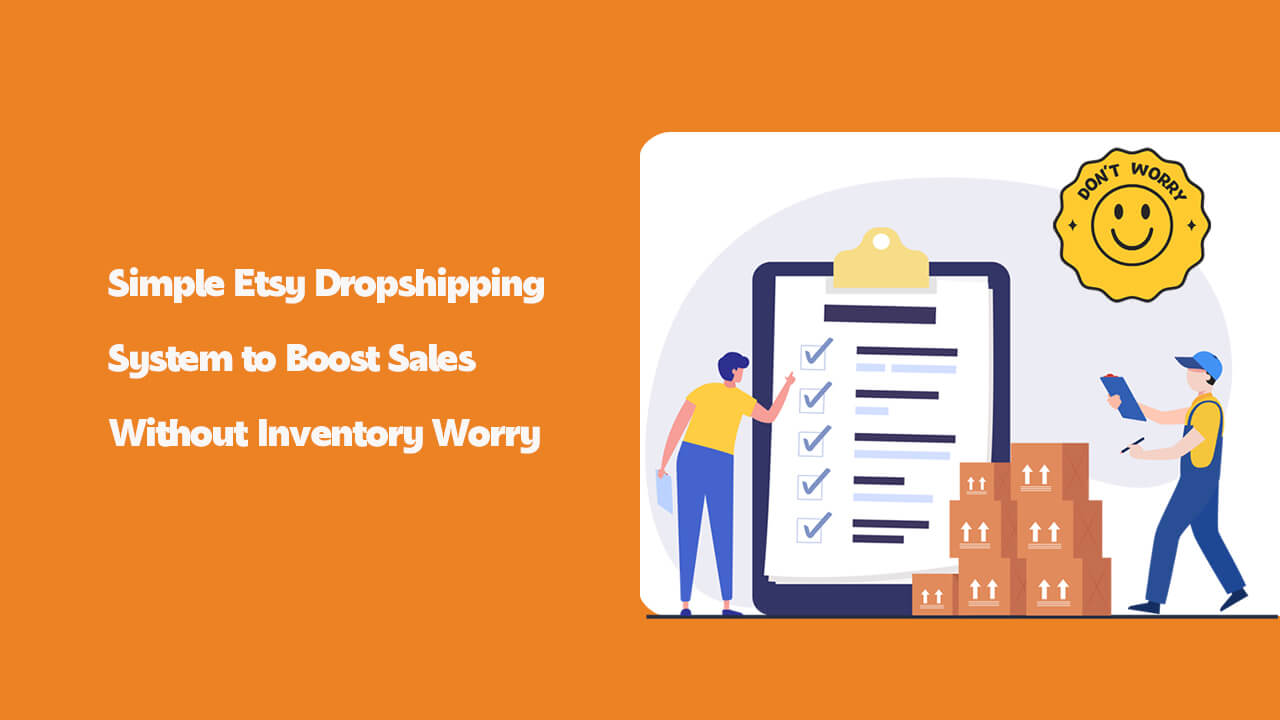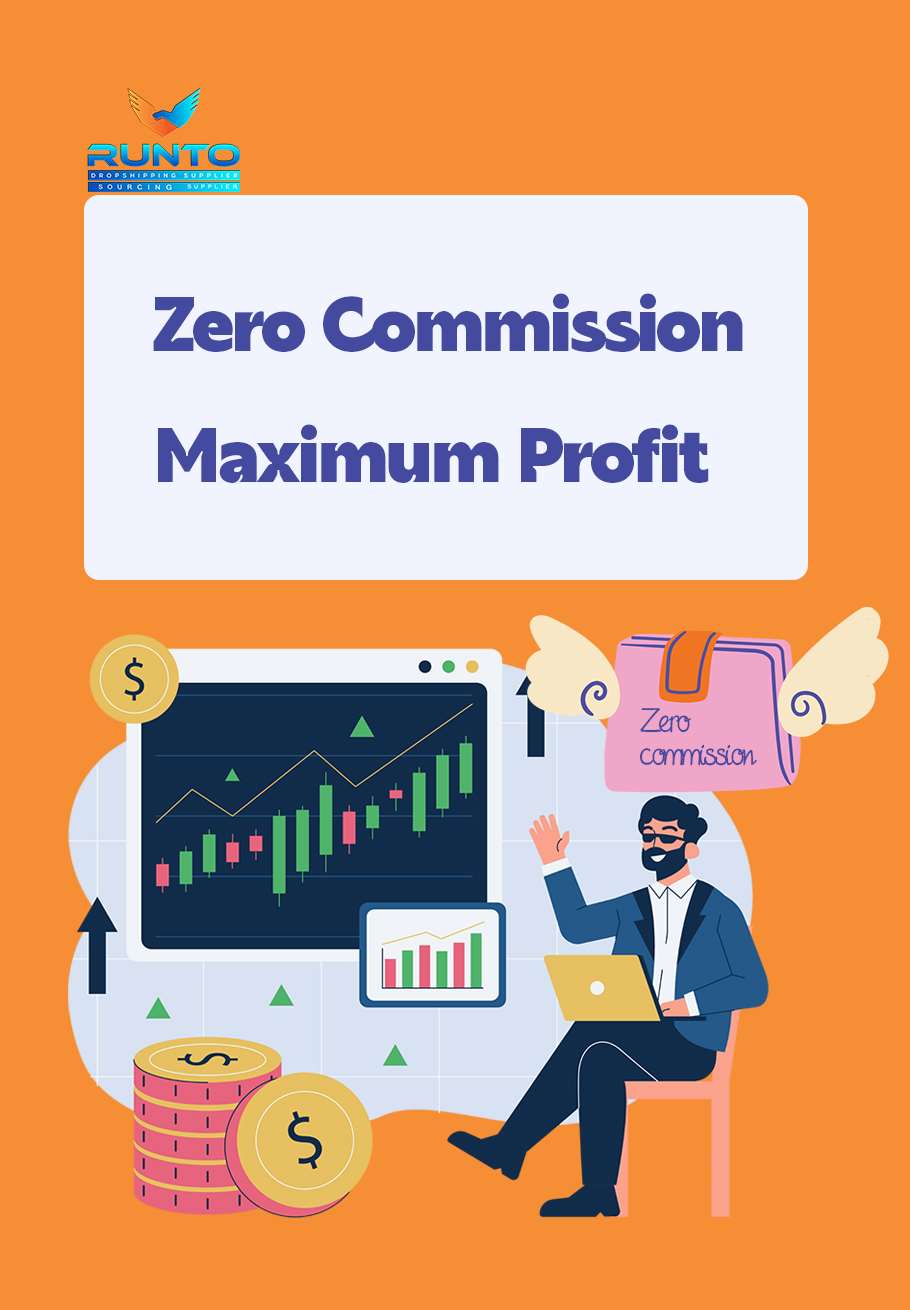In this article, we’re going to explore the world of dropshipping in the UK. This model presents exciting opportunities, especially for entrepreneurs looking to dive into e-commerce without the burdens of inventory management. We’ll break down essential components of this business model, covering everything from supplier relationships to legal requirements. By the end of this piece, you should have a comprehensive understanding of how to set up and succeed in a dropshipping business within the UK market.
What Is Dropshipping in the UK?
Dropshipping is a retail fulfillment method where a business doesn’t keep the products it sells in stock. Instead, when an order is placed, the retailer purchases the item from a third party and has it shipped directly to the customer. It’s like having a storefront without the hassle of storing or managing the inventory. But here’s the kicker—the beauty of dropshipping lies in its flexibility and low upfront costs.
In the UK, this model has gained traction due to the rise of e-commerce. Entrepreneurs appreciate the ease of starting a business without the headaches of traditional retail. The dropshipping model allows anyone with an internet connection to tap into countless products and markets. So, why are so many choosing to dropship in the UK?
To illustrate, consider a budding entrepreneur who finds a niche market selling eco-friendly products. By utilizing dropshipping, they can source items like reusable straws or biodegradable cutlery from suppliers and market them online without ever having to hold the inventory. This method drastically reduces financial risks and allows for quick market entry.
Yet, as enticing as it sounds, understanding the complexities of supplier relationships, shipping logistics, and customer service is crucial. For reliable sourcing, a partner like Runtoagent is often favored by sellers seeking quality assurance and efficient operations. Once you know these aspects, you’re on your way to launching a successful dropshipping business.
| Factor | Details |
|---|---|
| Business Model | Retail fulfillment without inventory management |
| Advantages | Low startup cost, flexibility, less financial risk |
| Ideal for | Entrepreneurs entering e-commerce |
Why Choose Dropshipping as a Business Model in the UK?
When contemplating a business model, dropshipping stands out for several reasons. You’ll want to know what makes it so appealing. First and foremost, the low startup costs cannot be overlooked. Unlike traditional businesses that require significant upfront investments in inventory, dropshipping allows you to launch with minimal financial commitment, enabling you to focus on marketing strategies right from the start.
But wait—there’s more! Flexibility is another critical advantage. You can quickly adapt your product offerings based on market trends, seasonal demands, or consumer preferences. Imagine being able to withdraw a poor-selling product and replace it with a trending one almost overnight. This agility is often absent in businesses that rely on pre-purchased stock.
In the UK, the dropshipping landscape is unique. Favorable logistics networks, competitive shipping rates, and numerous online marketplaces make it easier for businesses to operate efficiently. For instance, using platforms like Shopify or WooCommerce can streamline your operations significantly.
Additionally, many UK consumers are now more comfortable shopping online, which continues to fuel demand for dropshipping businesses. Success stories abound—entrepreneurs who have built thriving brands without ever holding stock. By collaborating with a sourcing partner like RuntoAgent, you can access factory-direct pricing and low minimum order quantities, giving you an edge in this competitive market.
| Advantage | Description |
|---|---|
| Low Startup Costs | Begin without a large financial commitment |
| Flexibility | Quickly adapt to market changes |
| UK Market | Growing consumer base for online shopping |
What Products Can You Sell Through Dropshipping?
-1024x576.jpg)
The choices are vast when it comes to what you can sell via dropshipping. What’s the real story? It boils down to identifying your target audience and aligning your product offerings to their preferences. In the UK, various niches have proven to be lucrative, especially in sectors like fashion, technology, and home decor.
Let’s delve deeper. Say you’ve identified a target demographic—millennials interested in sustainable living. You may decide to dropship eco-friendly products, such as bamboo toothbrushes, stainless steel containers, or organic cotton bags. Research indicates that sustainable products see increasing interest, making them ideal candidates for your selection list.
Don’t forget seasonal trends! For instance, items related to wellness tend to peak during New Year’s when resolutions abound. Consider adding fitness trackers or organic supplements during these months. Knowing what products resonate during specific times can significantly impact your sales strategy.
The key is to research and test. Utilize analytical tools to understand which products or categories perform better in your store and be willing to pivot as necessary. It’s also beneficial to keep an eye on competitors—check their offerings to gain insights into market trends.
When working with a sourcing partner like Runtoagent, you can leverage their product customization options. From logos to materials, customizing your offerings can help differentiate your brand and meet market demands effectively.
| Product Category | Potential Items |
|---|---|
| Fashion | Activewear, seasonal accessories |
| Eco-Friendly | Reusable straws, sustainable fabrics |
| Wellness | Fitness trackers, organic supplements |
How Do You Find Reliable Dropshipping Suppliers?
.jpg)
Finding reliable suppliers is crucial to your success in dropshipping. Now, this is where it gets interesting. Building a dependable supplier network can ultimately define your operational efficiency and your brand’s reputation.
Start your search by leveraging online directories like AliExpress, Oberlo, and SaleHoo. These platforms host numerous suppliers across various categories and offer user reviews to gauge reliability. However, be sure to look beyond the numbers; contact potential suppliers directly and inquire about their shipping times, return policies, and customer service practices. Strong communication can reveal their commitment level and response time—key indicators of a reliable partner.
Another essential factor is to order samples. By doing so, you’ll evaluate product quality firsthand, ensuring they meet your standards before they reach your customers. Remember, quality issues can lead to disgruntled customers and, ultimately, a tarnished reputation.
A sourcing partner like RuntoAgent offers a comprehensive quality control system, including pre-shipment inspections and factory audits. This could greatly enhance your reliability in sourcing, ensuring that your products meet high standards before they reach consumers.
You may also want to attend trade shows and networking events focused on dropshipping. Interacting with suppliers directly can lead to fruitful relationships that may not develop through online channels alone. Additionally, establish a contingency plan in case you need to switch suppliers quickly if something goes awry—because, let’s face it, things can go wrong.
| Supplier Type | Description |
|---|---|
| Online Directories | Platforms like AliExpress and Oberlo |
| Direct Samples | Evaluate product quality firsthand |
| Trade Shows | Network with potential suppliers |
What Are the Legal Requirements for Dropshipping in the UK?
Entering the dropshipping business in the UK requires understanding legal obligations. What’s the first step? You’ll need to register your business. This could be as a sole trader, partnership, or limited company, depending on your preference. Each structure has its tax implications, so it’s wise to consult a qualified accountant to ensure compliance.
Next, let’s dive into VAT. In many cases, dropshippers will need to register for VAT if their taxable turnover reaches the threshold set by HM Revenue and Customs. This not only affects your pricing strategy but also your accounting practices, so keep a diligent eye on your revenue.
It doesn’t stop there. Familiarizing yourself with consumer protection laws is vital. In the UK, businesses are obligated to provide customers with clear information about their rights, return policies, and delivery times. Consumers have a right to refunds under certain conditions, and dropshippers must honor these rules to avoid legal conflicts.
Lastly, always ensure compliance with data protection laws, particularly GDPR if you are dealing with customer data. Failing to comply can lead to hefty fines and damage to your brand’s reputation, an outcome no entrepreneur wants.
| Legal Requirement | Description |
|---|---|
| Business Registration | Choose a suitable business structure |
| VAT Compliance | Understand thresholds and tax obligations |
| Consumer Protection | Know customer rights regarding returns |
How Do You Set Up Your Dropshipping Business?
.jpg)
Setting up your dropshipping business involves several strategic steps. Ready for the good part? The first step is selecting an e-commerce platform. Popular options include Shopify and WooCommerce, each providing templates and features that can simplify the startup process significantly.
After choosing your platform, it’s crucial to design your site with customer experience in mind. A user-friendly layout ensures visitors stay longer, increasing your chances of conversions. Incorporating high-quality images, clear product descriptions, and easy navigation is essential.
Next, establish payment gateway options to enable secure transactions for your customers. Providers like PayPal, Stripe, and Square offer reliable services that can enhance customer trust.
Furthermore, ensure you’re set up for order fulfillment. This involves creating a system to track inventory, manage orders, and handle shipping operations seamlessly. Some e-commerce platforms offer integrated order management systems that streamline these processes significantly.
When it comes to logistics, partnering with RuntoAgent can enhance your setup. They provide dual-warehouse fulfillment options that improve shipping efficiency, ensuring quick delivery to your customers regardless of their location. This capability is essential for maintaining customer satisfaction.
Don’t forget to set up analytics to monitor site performance. Tools like Google Analytics can provide insights into customer behavior, helping you refine your approach over time.
| Step | Details |
|---|---|
| Platform Selection | Choose e-commerce solutions like Shopify |
| Website Design | Focus on user experience and aesthetics |
| Payment Systems | Ensure secure transactions through reliable gateways |
What Marketing Strategies Work Best for Dropshipping in the UK?
The effectiveness of your marketing strategies can significantly impact your dropshipping venture’s success. So, what should you focus on? Digital marketing is paramount in today’s business landscape, and for dropshipping, it’s essential to utilize various tactics effectively.
Social media marketing can be particularly effective for engaging your target audience. Platforms such as Instagram and Facebook not only allow you to showcase products but also enable interaction with potential customers. Additionally, leveraging influencer marketing—partnering with social media influencers who align with your brand—can greatly enhance your visibility and credibility.
But that’s not all. Implementing SEO best practices can improve your site’s ranking on search engines. Utilize keyword research tools to identify what terms potential customers are searching for related to your products. Optimize your website content accordingly to attract organic traffic.
Email marketing also remains a powerful tool. Build a newsletter to keep in touch with customers, share valuable content, and promote special offers. Personalization can enhance the effectiveness of these campaigns and ultimately drive more sales.
Lastly, consider leveraging pay-per-click (PPC) advertising to drive immediate traffic to your site. While this might require a financial investment, it can yield significant returns if managed effectively.
Integrating RuntoAgent into your marketing strategy can also yield benefits, particularly with their capabilities in white-label product services. Offering unbranded products can allow you to create a distinct brand identity that resonates with your target audience.
| Marketing Strategy | Description |
|---|---|
| Social Media | Engage audiences on platforms like Instagram |
| SEO Best Practices | Improve website ranking for organic traffic |
| Email Marketing | Foster customer relationships and drive sales |
How Can You Optimize Your Dropshipping Store for Success in the UK?
To enhance your dropshipping store’s success, a multifaceted approach is necessary. What’s the secret sauce? It lies in optimizing several key aspects of your online presence.
Start with your site design—ensure it’s intuitive and meets customer expectations. This means easy navigation, visually appealing layouts, and clear calls to action. If customers feel comfortable on your site, they’re far more likely to make a purchase.
Next, the importance of product descriptions cannot be overstated. Each description should be informative and persuasive, combining relevant keywords with compelling storytelling to engage customers. High-resolution images also play a vital role, as visual representations can significantly influence buying decisions.
Utilizing analytics tools is invaluable to understand consumer behavior. With insights into metrics such as bounce rates and time spent on pages, you can make data-driven decisions. Testing different approaches, such as A/B testing for pricing or layouts, can help you identify the most effective strategies.
Finally, ensure excellent customer service. Quick response times and helpful solutions to issues can lead to happy customers and, ultimately, repeat business. Look into automation tools that can help manage customer inquiries efficiently without sacrificing quality.
Partnership with a dropshipping agent like RuntoAgent can further enhance your store’s optimization efforts. Their packaging customization options, including branded boxes and additional inserts, can help create a memorable unboxing experience for your customers, leading to increased loyalty.
| Optimization Area | Importance |
|---|---|
| Website Design | Enhances user experience |
| Product Descriptions | Influences purchasing decisions |
| Customer Service | Vital for repeat business |
What Common Challenges Might You Face in Dropshipping?
.jpg)
Every business comes with its challenges. What should you be prepared for? Among the most common hurdles faced in dropshipping are supplier issues, customer management, and intense competition.
Supplier-related challenges can include shipping delays, which can frustrate customers and cause damage to your brand’s reputation. It’s essential to have contingency plans in place, such as identifying backup suppliers who can step in when needed. Regularly communicate with your suppliers to ensure they meet standards and timeline expectations.
Customer service can also be a significant pain point. Managing expectations is crucial, especially when it comes to delivery times. Use email updates to keep customers informed about their order status and potential shipping issues.
Then there’s competition. The UK market is rapidly evolving, with more entrepreneurs entering the dropshipping space. This means differentiation is key. By establishing a unique selling proposition (USP)—what makes your brand different or better—you can attract customers amidst the noise.
Lastly, be prepared to embrace continuous learning. Trends change, and staying abreast of e-commerce advancements will keep you ahead of the curve. Having a strong partner like RuntoAgent can provide you with the necessary support to tackle these challenges effectively while enhancing your operational efficiency.
| Challenge | Response |
|---|---|
| Supplier Issues | Have backup suppliers ready |
| Customer Service | Maintain clear communication |
| Competition | Focus on a unique selling proposition |
How to Scale Your Dropshipping Business in the UK?
Scaling your dropshipping business requires strategic thinking. Ready for the good part? Identifying growth opportunities is paramount. Once you have established a stable baseline, you’ll want to analyze your performance metrics to see where you can expand.
One effective approach is to explore new product lines. For example, if you’ve been selling eco-friendly products like tote bags, consider branching out into kitchenware or personal care items. Researching consumer pain points can yield insights into products that may resonate well with your current customer base.
Consider geographical expansion as well. If your dropshipping operation is currently UK-focused, it may be time to look at neighboring markets such as the EU. Ensure you understand the regulations affecting cross-border shipping and marketing.
Investing in advanced marketing strategies may also be necessary as you scale. Utilizing data analytics can help refine targeting and content delivery while paid search or social media campaigns might yield impressive returns if executed correctly.
Lastly, it might be time to consider automation tools for order processing, inventory management, and customer communication. Streamlining these aspects allows you to focus on higher-level business strategies and growth.
To support your growth, partnering with RuntoAgent can enable you to access custom packaging solutions. Their array of services provides essential tools to help you establish a recognizable brand in an increasingly crowded market.
| Scaling Strategy | Considerations |
|---|---|
| New Product Lines | Research customer needs |
| Geographical Expansion | Understand international regulations |
| Marketing Investments | Utilize data analytics for targeted campaigns |
What Resources Are Available for Dropshippers in the UK?
If you’re just starting, understanding where to find resources is invaluable. This is where it gets interesting. The UK boasts numerous platforms, communities, and educational resources tailored to help you navigate the dropshipping landscape effectively.
Books on e-commerce and dropshipping can provide foundational knowledge. Consider titles like “The Everything Guide to Dropshipping” for comprehensive insights. Online courses are also plentiful; platforms like Udemy and Skillshare offer classes on e-commerce management and marketing strategies.
Networking is another powerful resource. Engage with fellow dropshippers through online forums or social media groups to share experiences and learn from each other. This is an excellent way to gain real-world insights that may not be found in books.
Don’t overlook local business support organizations. Many government-backed initiatives provide information on legal requirements, marketing support, and even funding options for startups.
To complement these resources, RuntoAgent offers comprehensive support for dropshippers, from quality inspections to product and packaging customization. This partnership could be a game-changer as you find your footing in this competitive space.
| Resource Type | Description |
|---|---|
| Books | Educational materials on dropshipping |
| Online Courses | Classes for e-commerce skills |
| Networking Opportunities | Forums and groups for peer support |
Conclusion
In summary, dropshipping in the UK offers an incredible opportunity for aspiring entrepreneurs. From understanding the business model and identifying reliable suppliers to navigating legal requirements and implementing effective marketing strategies, each phase of this journey is vital for success. RuntoAgent stands out as a strong partner for new sellers, providing essential services that enhance product sourcing and logistics management. Utilize the resources outlined in this article to propel your business forward, and remember that ongoing learning and flexibility are keys to long-term profitability.
👉 Learn more at RuntoAgent.com
FAQ Section
Q1: What is dropshipping?
Dropshipping is a retail fulfillment method where a business doesn’t keep the products it sells in stock. Instead, when an order is placed, the retailer purchases the item from a third party and has it shipped directly to the customer.
Q2: How does dropshipping work?
In dropshipping, the retailer operates an online store without handling inventory directly. They list products on their website, and once an order is placed, they send the order details to the supplier, who fulfills the order and ships it directly to the customer.
Q3: How do I find suppliers for dropshipping?
You can find dropshipping suppliers through directories, trade shows, and wholesale supplier websites. Researching online reviews and supplier communication practices can help you choose reliable partners that understand the UK market.
Q4: What are the advantages of dropshipping?
Dropshipping minimizes upfront investment and reduces financial risks, allowing you to operate in a flexible business model that can adapt to trends without the burden of inventory management.
Q5: Are there any legal requirements for dropshipping in the UK?
Yes, businesses must register for tax purposes, comply with VAT regulations, and adhere to UK consumer protection laws. It’s important for dropshippers to ensure they meet all legal obligations for a sustainable business model.







